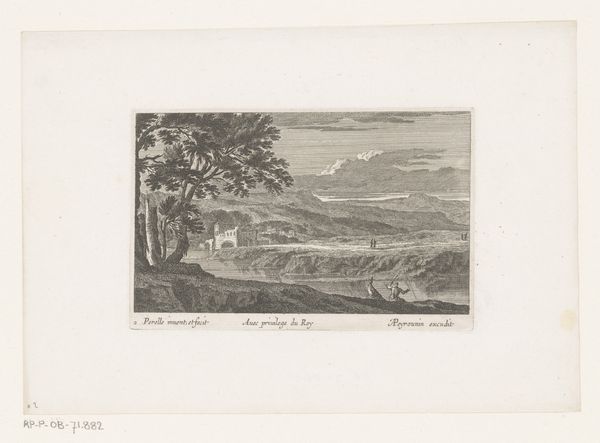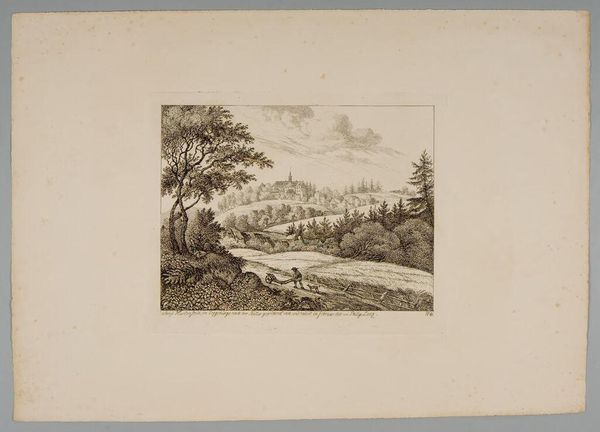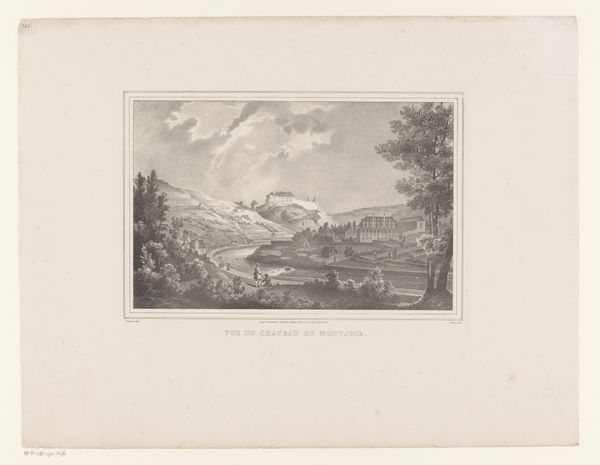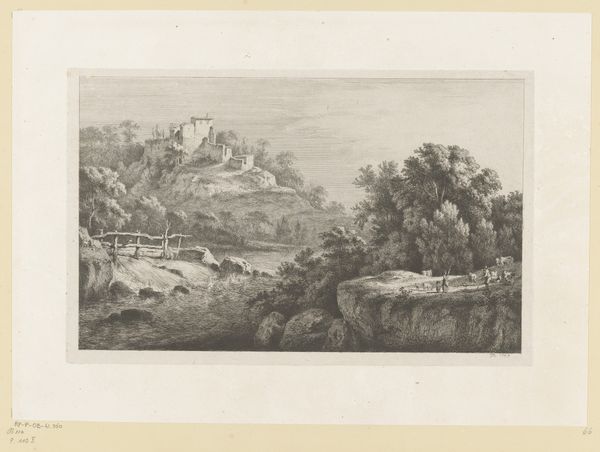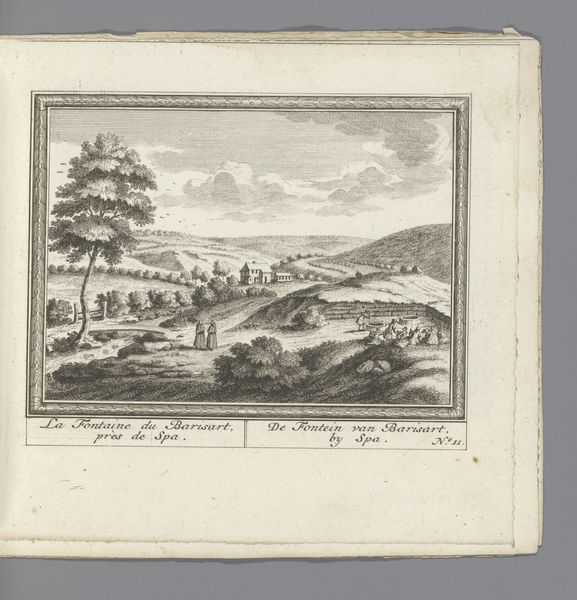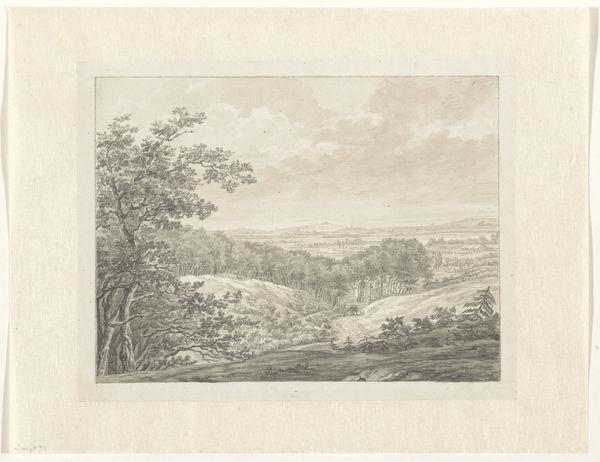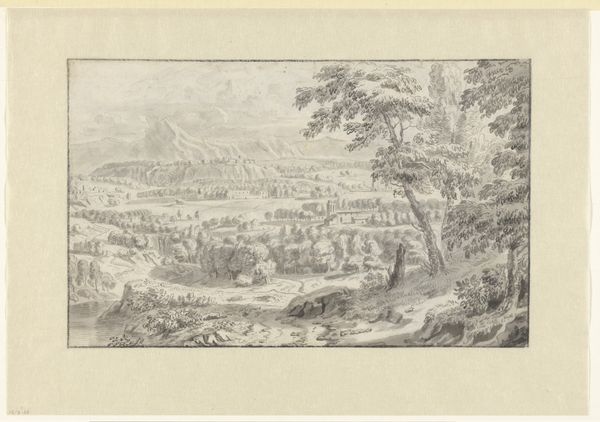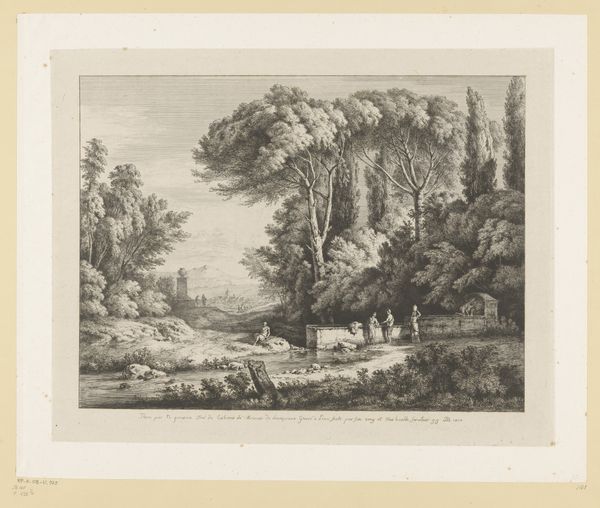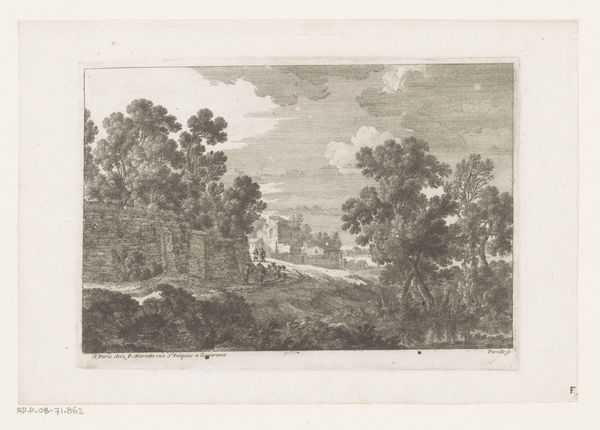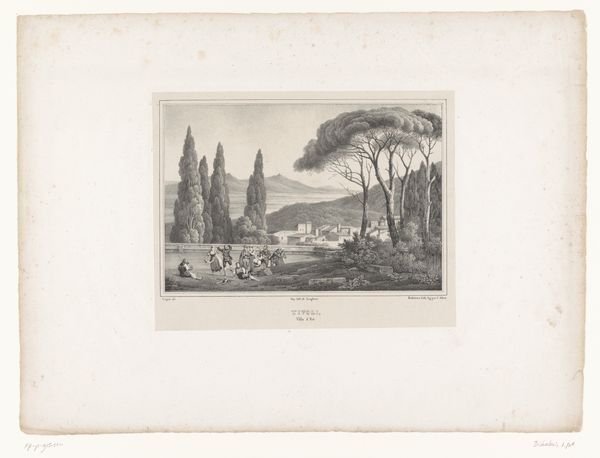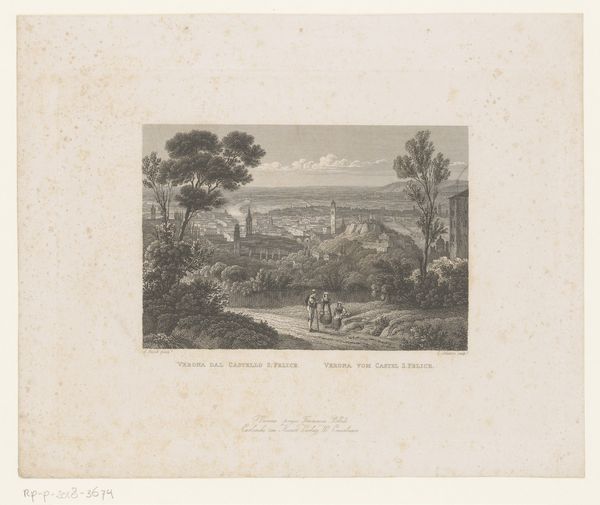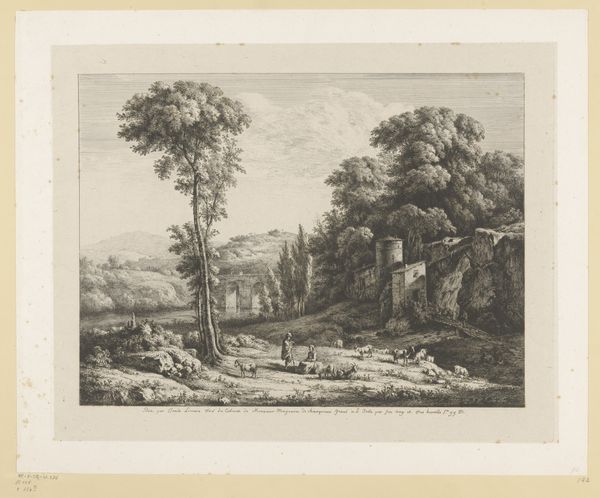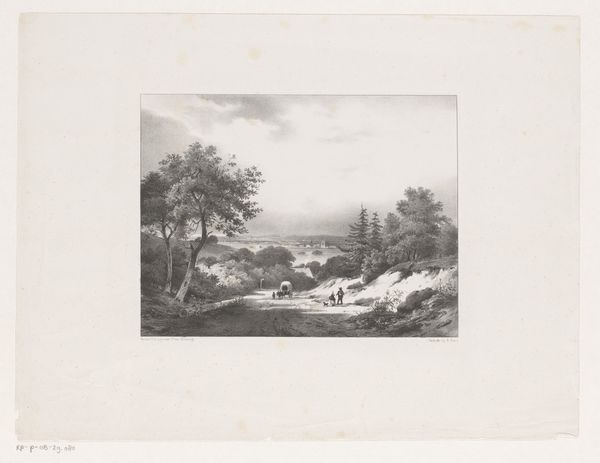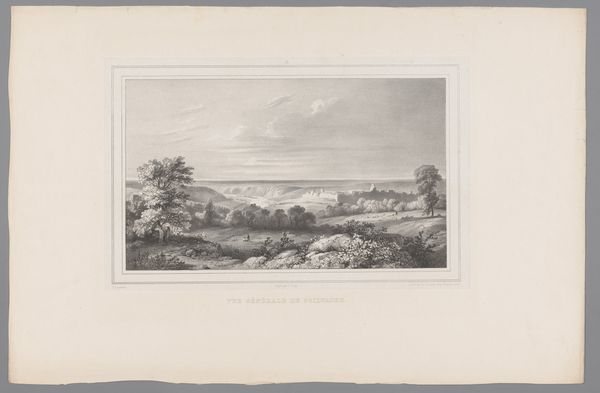
Dimensions: height 159 mm, width 216 mm
Copyright: Rijks Museum: Open Domain
Curator: A rather dreamy cityscape before us today, wouldn't you say? This etching and print on paper, dating from around 1833 to 1880, is titled "Heuvellandschap met stad", which translates to "Hilly Landscape with City", created by Auguste Numans. It gives me a distinct feeling of peaceful solitude, something akin to looking at an untouched world in a black and white movie. What strikes you about it at first glance? Editor: A quiet pensiveness. There's something deeply nostalgic about the etching's depiction of a town nestled amidst rolling hills. It evokes a longing for simpler times, doesn’t it? And even beyond, the etching itself feels somehow significant; lines suggesting collective memory—etched into existence. Curator: Yes, precisely. Notice how the artist uses line work, probably pencil-drawn, to bring a sense of realism. The play of light and shadow seems calculated to draw the eye towards the distant cityscape, like he has used a silverpoint technique and has created a hazy horizon and also creates a slightly faded but detailed view, from an observant high up-hill angle? Editor: Indeed. The meticulousness reminds me of early cartography. Think of maps as psychological projections. The etching positions the viewer, much like cartographers did, as possessors of the landscape. The tiny figure walking with his dog…is he claiming dominion, or simply lost in contemplation? And that tiny, clustered village sitting neatly in that dip on the landscape - almost doll-like and precious, it sits innocently. Curator: I lean towards the contemplation, though that era often blurred the lines between observation and ownership. But do you think the figure represents someone specific to Auguste Numans, or a sort of romantic idealization? Also note how that road meanders; are we traveling toward something, or from? I suspect this journey symbolizes something larger. Editor: Possibly both. It touches upon archetypes – the wanderer, the community. These symbols trigger deep emotional responses; for instance, that lone figure stirs in me feelings related to safety versus vulnerability, domesticity contrasted with nomadic lifestyle… What this also represents through all those images in different formations; from the trees on either sides that stand guard to the village nested securely, and to the figure's posture which denotes calmness and purpose. Curator: Very well pointed out. It feels so much more intentional and thought provoking once everything is connected to deep embedded symbols, so perhaps a memory frozen in ink? That speaks to the human condition! Editor: Yes, frozen...a poignant reminder of the fleeting nature of time, but enduring power of symbols. This artwork prompts introspection - looking back on how cities were, which ultimately connects with personal narratives of all viewers - in an almost ethereal, surreal connection between image and psyche!
Comments
No comments
Be the first to comment and join the conversation on the ultimate creative platform.
